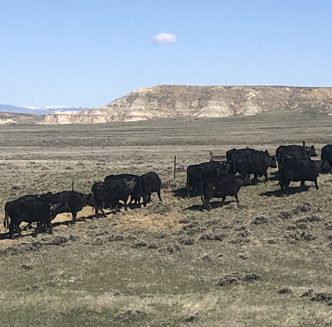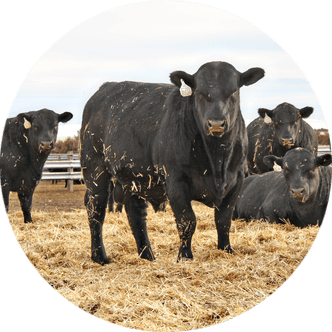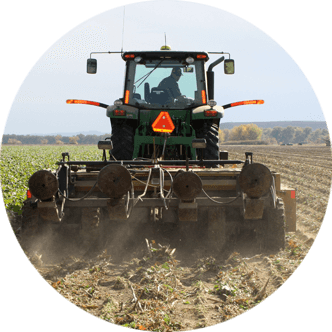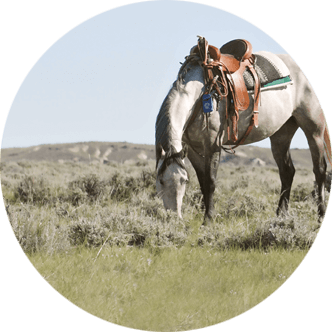Extension Education: Profitability or Efficiency – How Do You Figure?
Efficiency and profitability go hand in hand, but they are not equivalent. Let’s look at why this is.
Efficiency can be applied to many factors on the farm or ranch. Before investigating where it can be measured, it may be helpful to define what is meant by efficiency. Basically, efficiency can be understood as the quantity or value of output in relation to the number of resources used to produce an output.
A common example is the fuel economy of a vehicle. Fuel consumption can vary from 10 miles per gallon (mpg) or less for larger trucks to 40 mpg or more in highly efficient cars.
What is the underlying question? How many miles – the output – will the vehicle go on one gallon of fuel – the input.
There are many other measures of efficiency which apply to agricultural businesses.
Profitability is a term often used in business management and fundamentally related to financial performance. To calculate profitability, total expenses must be deducted from total revenue. If expenses are greater than revenue, it is called a loss rather than profit.
Sometimes, many enterprises are nested under one business title or entity. It can be helpful to tease apart the revenue and expenses related to each individual enterprise such as custom feeding, hunting and outfitting, hay or crop production, cow/calf or real estate leasing activities.
Even though an operation may be showing a profit at the end of each period, it may be surprising to find the profits made in one enterprise may be compensating for losses in another.
While efficiency influences profitability, it is only part of the equation. An operation may be extremely efficient but unprofitable because of various reasons.
On the other hand, a business may be profitable even though it is not as efficient as others. Managers must carefully weigh the costs and returns associated with efforts to increase efficiency.
Physical efficiency
Activities on a farm or ranch are often limited by mechanical, biological or physical barriers which can be difficult to overcome.
Physical efficiency is measured by units of output per unit of input.
A classic example is tons of hay or bushels of corn harvested per acre. Yields are influenced by many factors including the type of equipment used, as well as natural variables like the amount of water, nutrients and sunlight available.
Similarly, the feed conversion efficiency of a weaned calf is influenced by genetics and the environment, among other factors.
Although the weather may be hard to control, choices regarding equipment, infrastructure or management practices can change physical efficiency.
Economic efficiency
Measures of economic efficiency are often driven by the efficiency of physical factors but usually reported as dollar values per unit of input or as a percentage of capital use.
Economic efficiency can be calculated as the dollar value of output divided by the cost of input used to produce the output.
Economic efficiency is affected by the selling price and quantity of outputs, as well as the quantity and prices of inputs used. Revenue generated from the sale of outputs divided by units of input used – i.e. tons of feed, gallons of water or hours of labor – would be considered a measure of economic efficiency.
Although efficiency measures are extremely helpful, using total revenue and total expenses results in an average for the period. This may mask efficiency fluctuations occurring throughout the period.
For the record
Recordkeeping is an important practice in any business. Without recordkeeping, evaluating the impact of management decisions can be difficult to quantify and determine if things are moving in the right direction.
Efficiency measures can be calculated – or at least deduced – based on historical records. Comparing current performance and production with historic levels may be helpful to identify trends of improvement or decline. As more data is collected, decisions to make a change will be better informed and more reliable.
For example, did calf weaning weights change after using a growth implant? Did more lambs survive because of a change in lambing date?
The influence of fertilizer on crop yields would be another example of a change in practices that could be easily documented.
Application of concepts
It may be helpful to see how these concepts are applied in an example.
A fictitious cow/calf operation carries 300 mother cows year-round. Since the operation experienced a five percent death loss, only 285 calves were sold for $1,500 each. The total revenue for the enterprise equals $1,500 × 285 = $427,500.
Assuming cow costs were $900 per head, including feed, labor, depreciation and equipment, total expenses would be $900 × 300 head = $270,000.
If the total value of output produced is divided by the cost of the output, it would equal an economic efficiency of $427,500 ÷ $270,000 = 1.58. This indicates, on average, each dollar of expense associated with the cow/calf enterprise resulted in a revenue of $1.58.
However, since money was spent on cows that did not raise a calf until sale time, there is some inefficiency in the system. The costs associated with those 15 cows are $900 × 15 = $13,500. We can subtract this from the total herd costs.
Therefore, if the economic efficiency is recalculated, then $427,500 – $256,500 = 1.67 is the economic efficiency associated with only the productive cows.
In this case, the operation is losing nine cents on the dollar because of inefficiency: $1.67 – $1.58 = $0.09.
Eliminating all causes of inefficiency can be difficult if many factors are involved. However, active observation of the enterprise can provide insight where management can have a positive impact on efficiency and potentially influence profitability.
In the basic outlined example, total profit equals $427,500 – $270,000 = $157,500. There are many other ways this profit may be reported – per acre, per calf sold, per cow exposed, etc.
Physical efficiency tells how many calves were raised per ton of hay fed or units of another input used. Economic efficiency measures the ratio of revenue to expenses, while profitability quantifies their difference.
Jedidiah Hewlett is the University of Wyoming Extension agriculture and natural resources educator serving Converse County. He can be reached at jhewlett@uwyo.edu or 307-358-2417.





